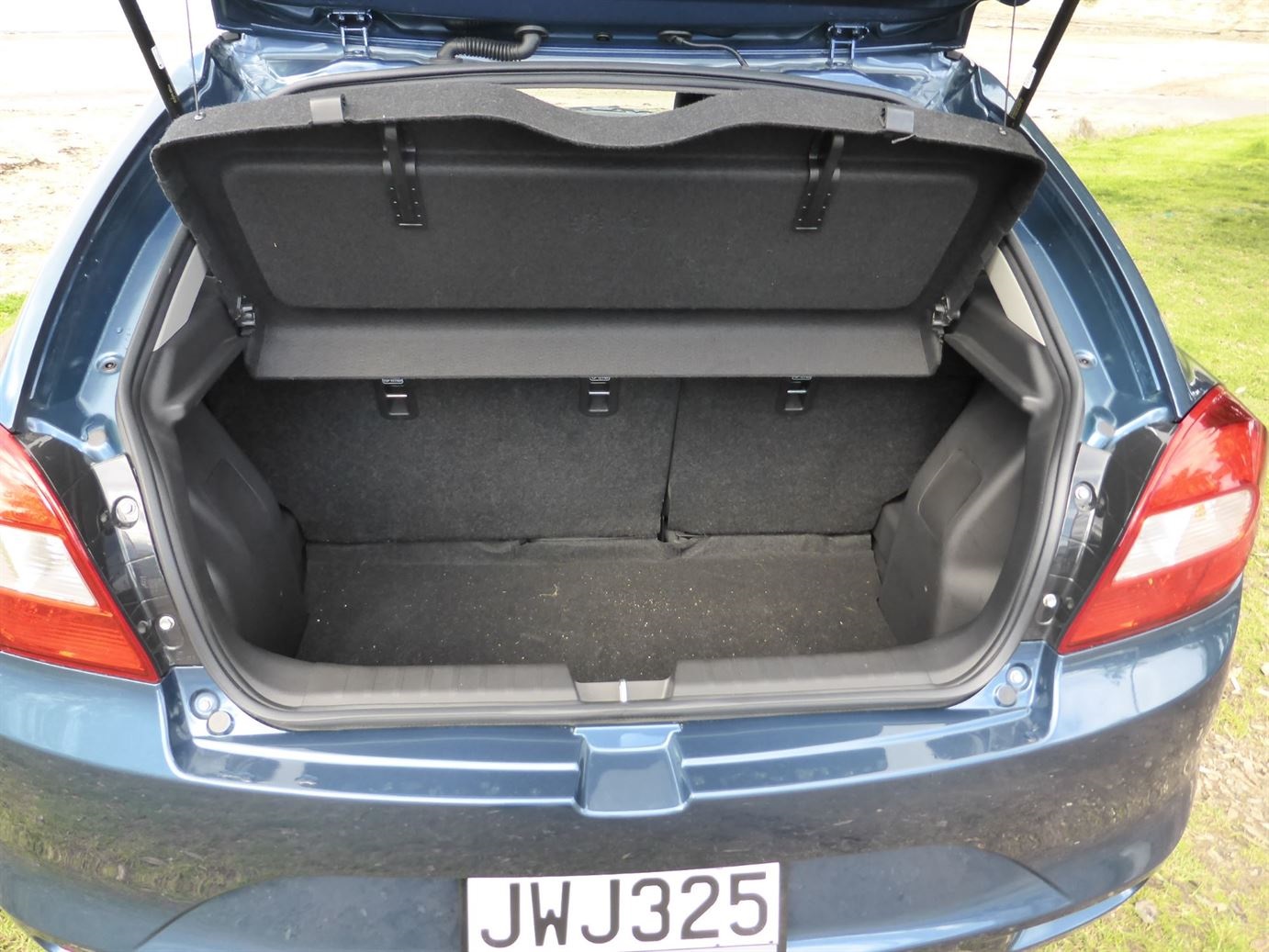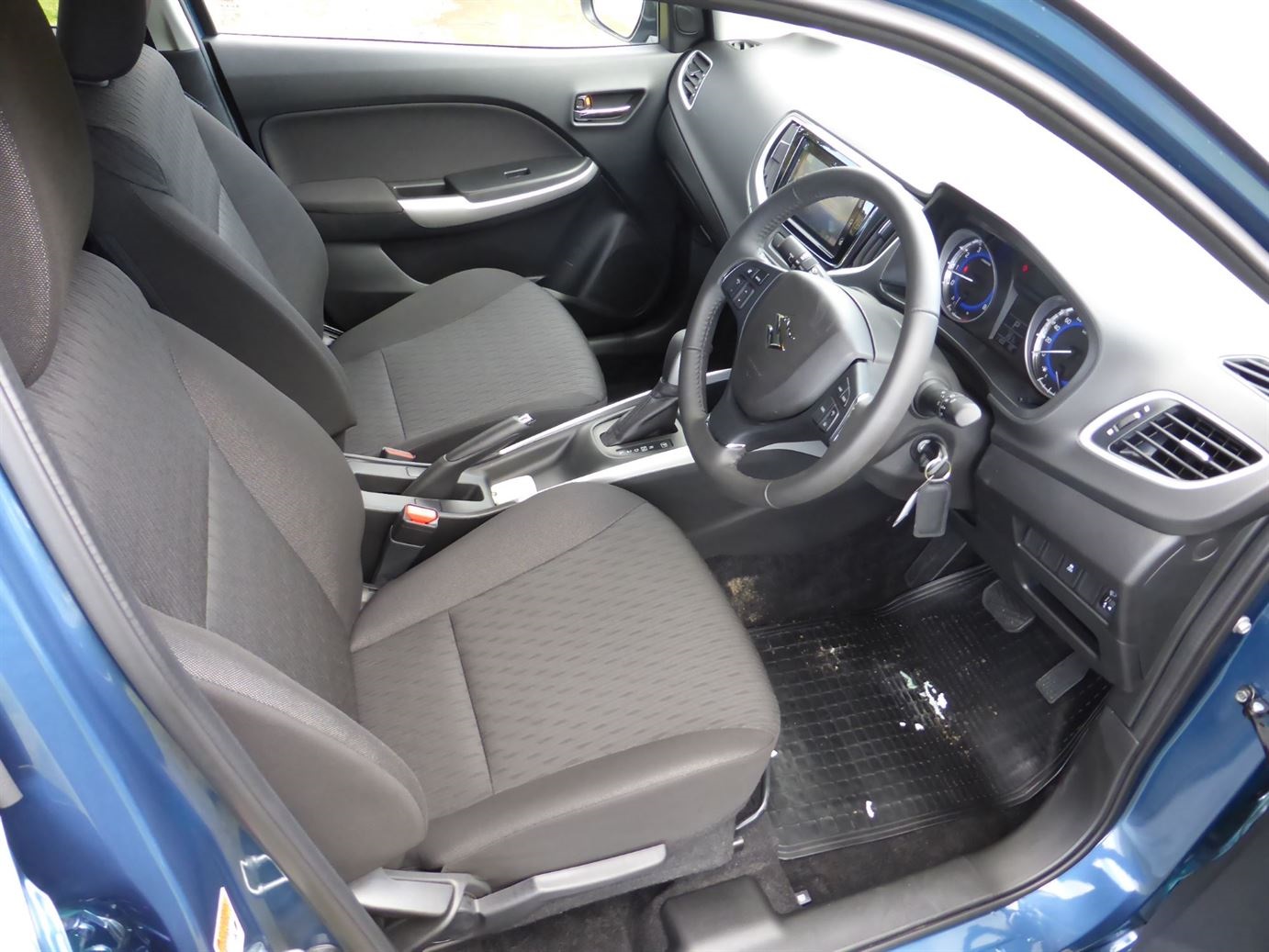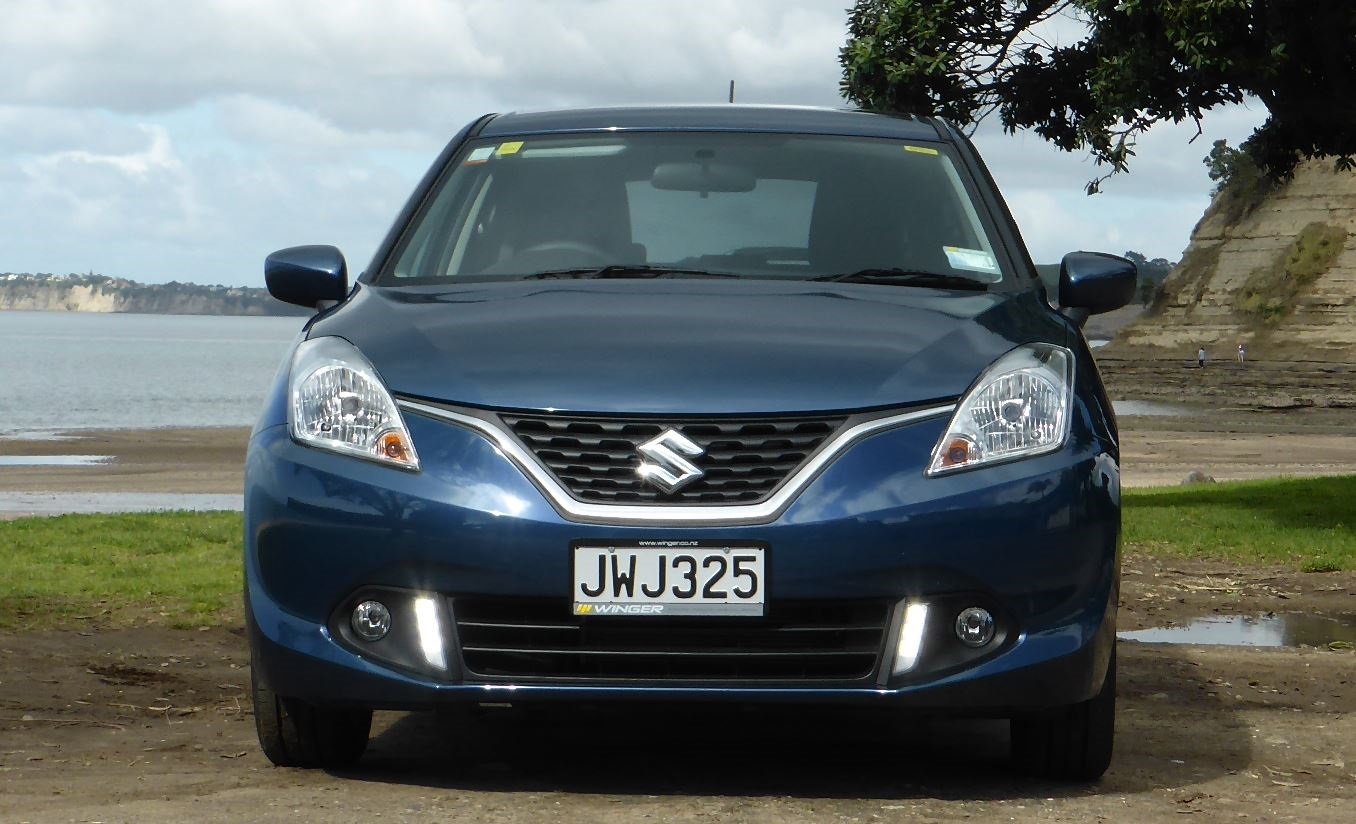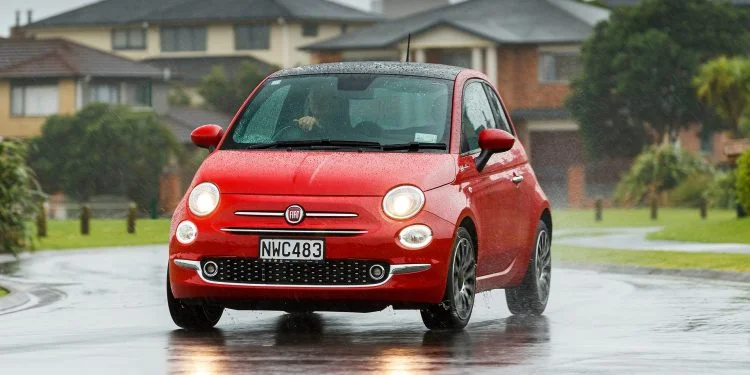Suzuki Baleno Limited 2016 hatchback review
You know Suzuki – they’re the ones that make that small car that you see everywhere.

You know Suzuki – they’re the ones that make that small car that you see everywhere. EVERYWHERE. Why did it become so popular? It's competent, stylish and fills a need.
They also make a couple of good, cheap, rugged off-roaders (Jimny and Grand Vitara) - they’re not as popular, but I like them. Now there’s this Baleno. It’s slightly bigger than a Toyota Yaris at just under 4 metres long and with 355 litres of space in the boot. That means it’s only 10cm longer than the ubiquitous Swift. Could Suzuki NZ be risking cannibalising sales?
Inside and out
Here’s how they compare: the Swift is kind of sporty with perky handling, but its boot space sucks. The Baleno is sensible with benign handling, and quite good boot space – I managed to fit my bike in the back with the seats folded down, and that definitely wouldn’t happen with a Swift. The seats don’t fold to form a totally flat floor though.
Cabin space isn’t compromised by the big boot. There is plenty of room for the driver and passenger, and rear-seat passengers under 6’2” will find enough legroom. In this sense, I didn’t particularly like the Baleno compared to the Swift. If you tend to carry things rather than people, the Swift’s lack of space might mean several bites are required, whereas the Baleno could swallow them whole.
The price is, in typical Suzuki fashion, good value. At just under $25,000 for the LTD, it’s cheaper than the most expensive Toyota Corolla. It’s also not as well put together on the inside. The cabin seems cheaper with the exception of the 7-inch touch screen which doubles as the satellite navigation and reversing camera display. The user interface needs some work and you’ll probably find yourself getting the instruction manual out to figure out some of the features.
On the road
The automatic transmission has just L, 2 and D for the forward ratios – just like they made them in the '80s – and it drives a 1.4-litre 68kW engine that needs to be worked hard to deliver any performance (although it helps keep fuel economy down to 5.4l/100km). The Baleno is also very fuel-efficient.
There are two versions: the GLX and LTD. The GLX is available in manual and automatic, whereas the more expensive LTD is only available in automatic. The LTD version gets front fog lamps and 16-inch alloy wheels with 185/55R16 tyres versus the GLX’s 15-inch steel wheels with 175-width tyres, and that’s the only difference.
The exterior of the car is plain and only slightly accented with a couple of bits of chrome trim. Usually when we get a car to review I like to give it several good long drives to figure out what’s good and bad, but I didn’t this time, limiting it to one long(ish) trip and a few short ones.
When you’re going straight ahead there’s some resistance to turning – this resistance is used in electromechanical steering to let you know you’ve reached the centre – but as soon as you overcome that inertia the steering is far too light. I’m sure you’ll get used to it, but I wasn’t a fan.
Overall
Overall, Suzuki has again delivered a car which screams value.
Note: this was reviewed as a new vehicle.
Image gallery
Also consider






